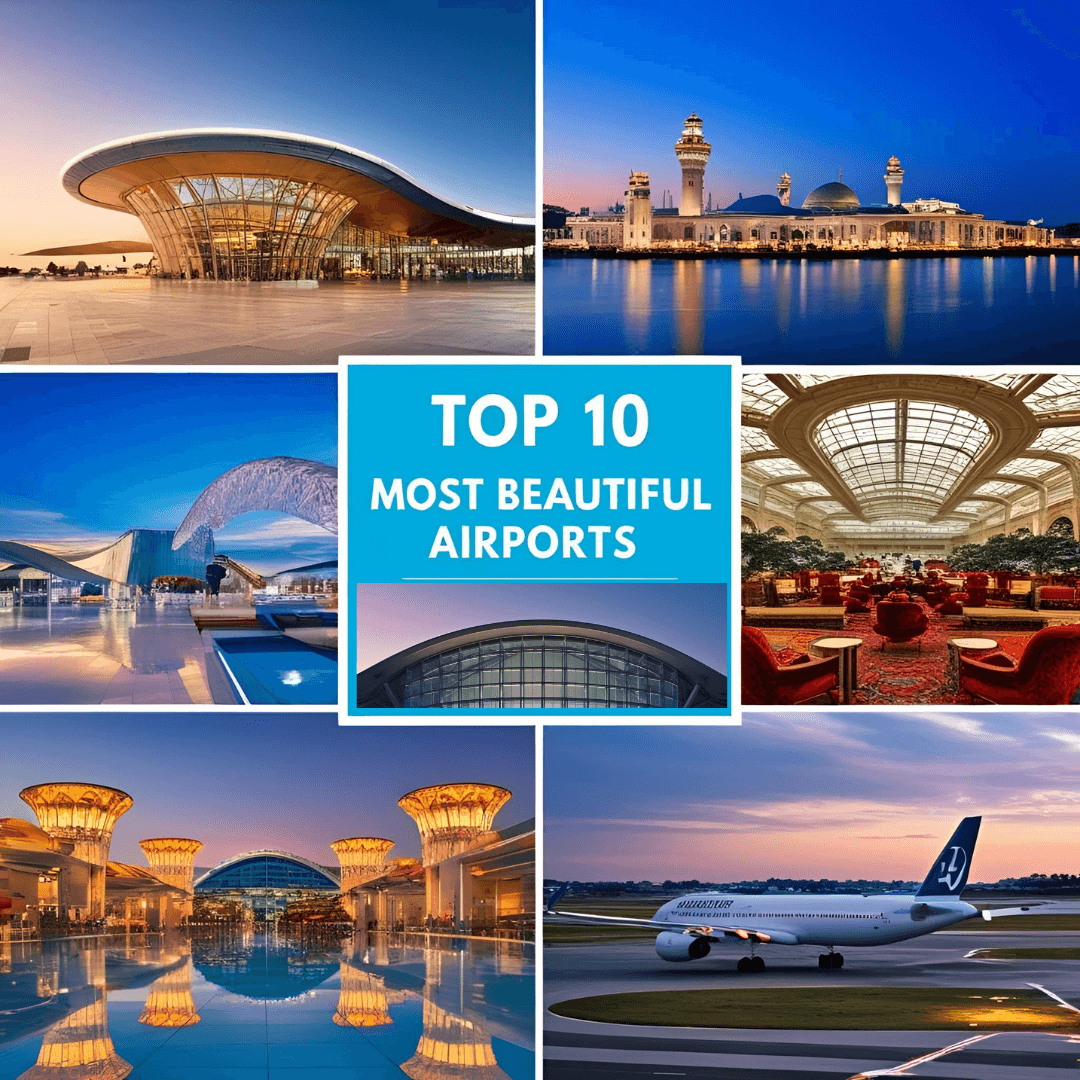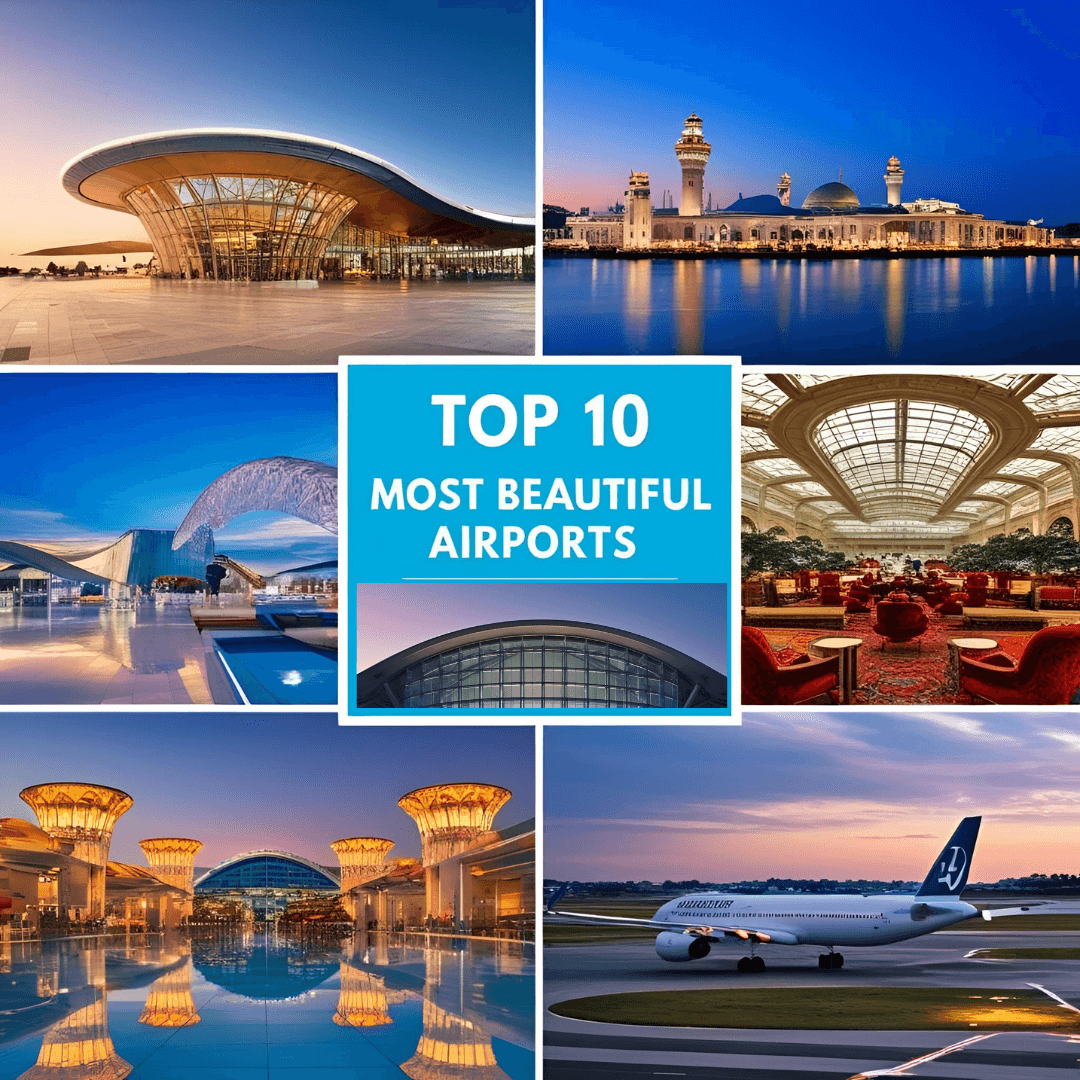Airports are no longer just transit hubs; they have become destinations in themselves. Many airports are designed to provide not just functionality but a unique and aesthetically pleasing experience. From stunning architecture to world-class amenities, these airports set the bar for beauty and innovation in the travel industry. Here's a look at some of the most beautiful airports around the world and what makes them so special:
1. Changi Airport (Singapore)
Changi Airport is often touted as the world’s best airport, and for a good reason. Its design combines functionality with art, creating a tranquil and luxurious atmosphere for travelers. The Jewel Changi complex, featuring the world’s tallest indoor waterfall, "Rain Vortex," and a lush indoor garden called the "Forest Valley," is a standout. The airport also boasts butterfly gardens, art installations, and even a swimming pool.
Why It’s Beautiful: The integration of nature, innovative architecture, and artistic installations transforms this airport into an oasis for travelers, making it a unique and stunning space.
2. Incheon International Airport (Seoul, South Korea)
Incheon is an airport that combines sleek, modern design with traditional Korean elements. It’s known for its wide-open spaces, reflecting the country’s commitment to hospitality. The airport also includes beautiful art galleries, a museum, and even a Korean traditional cultural experience center for passengers to learn about the nation’s heritage while waiting.
Why It’s Beautiful: Incheon blends modern elegance with cultural heritage, offering a unique and enriching experience. Its spacious terminals make it feel more like a cultural destination than just a stop on the way to another location.
3. Dubai International Airport (Dubai, UAE)
Dubai’s airports have become synonymous with luxury and extravagance, and Dubai International is no exception. The airport is known for its stunning futuristic architecture, including the gleaming glass and steel design. The facilities here are world-class, from luxurious lounges to high-end shopping, and the terminal is adorned with intricate designs and modern artwork.
Why It’s Beautiful: The airport’s cutting-edge architecture, luxury services, and welcoming atmosphere embody the grandeur of Dubai itself.
4. Hamad International Airport (Doha, Qatar)
Hamad International is a modern masterpiece with sleek lines and contemporary design. The airport has impressive public art installations, including the giant sculpture of a teddy bear with a lamp, known as "Lamp Bear" by Urs Fischer. It also features spacious terminals and high-end services, ensuring a comfortable travel experience.
Why It’s Beautiful: The airport’s striking architecture, large open spaces, and memorable art installations make it an architectural gem.
5. Munich Airport (Munich, Germany)
Munich Airport is a perfect blend of modern design and German efficiency. The airport is not just functional but also beautiful, with a sleek, open design that allows for natural light to fill the terminal. It’s also home to a variety of green spaces, an observation deck, and even a brewery where passengers can sample local beer.
Why It’s Beautiful: The open architecture, natural lighting, and cultural elements such as the beer garden and observation deck make Munich Airport a relaxing and aesthetically pleasing place to transit.
6. Tokyo Haneda Airport (Tokyo, Japan)
Tokyo Haneda is a great example of minimalist Japanese design. With its clean lines, soft lighting, and tranquil atmosphere, the airport creates a calming environment for travelers. The design emphasizes efficiency while still feeling spacious and open. The airport also features cultural exhibits, food courts with traditional Japanese cuisine, and even a small observation deck.
Why It’s Beautiful: The balance of minimalism, serenity, and Japanese design principles makes Haneda a peaceful and visually appealing space for travelers.
7. Zurich Airport (Zurich, Switzerland)
Zurich Airport blends Swiss precision with aesthetic beauty. The airport’s modern architecture features sleek, open spaces filled with natural light, and it includes green spaces and artwork that create a soothing atmosphere. The integration of nature and the clean, functional design is a perfect reflection of Swiss culture.
Why It’s Beautiful: The sleek design, natural elements, and artistic touches make Zurich Airport a calming and elegant experience.
8. Hong Kong International Airport (Hong Kong)
Hong Kong International is one of the busiest airports in the world and is known for its modern design and world-class amenities. The airport’s striking design, with its wave-like roof and expansive terminal spaces, provides a sense of openness and fluidity. It also has art exhibitions, a large shopping mall, and a range of dining options, reflecting the city’s cultural vibrancy.
Why It’s Beautiful: The sweeping architectural lines, spacious terminals, and cultural vibrancy make Hong Kong International both impressive and visually stunning.
9. Kansai International Airport (Osaka, Japan)
Kansai Airport is an engineering marvel that was built on an artificial island in Osaka Bay. Its stunning terminal, designed by Renzo Piano, is recognized for its futuristic design, which features a long, undulating roof that gives the impression of a large wave. The design is both functional and visually striking, with vast open spaces and an elegant aesthetic.
Why It’s Beautiful: The futuristic design and the innovative use of space make Kansai Airport an iconic and beautiful structure.
10. Amsterdam Schiphol Airport (Amsterdam, Netherlands)
Schiphol is more than just a transit hub; it’s a cultural experience. The airport has an extensive collection of art, including works from Dutch masters like Van Gogh, and a small museum showcasing Dutch history and culture. The airport also features open spaces with plenty of natural light, making it feel more like a high-end shopping mall than an airport.
Why It’s Beautiful: Schiphol’s blend of culture, open spaces, and modern architecture makes it one of the most beautiful airports in Europe.
Beautiful airports play a significant role in enhancing the travel experience by setting a positive tone for the journey. A visually appealing airport can make the process of travel feel more enjoyable and less stressful. Architecture, design, and ambiance contribute to a welcoming environment, offering a sense of comfort and excitement. This is especially important as airports are often the first and last places travelers experience in a city or country.
Well-designed airports also promote efficiency. Open, well-organized spaces reduce confusion, improving the flow of passengers. Natural elements like greenery or large windows with scenic views can create a calming atmosphere, helping to ease the tension of long waits. Beautiful airports often include art installations or cultural displays that give travelers a glimpse into the local culture, creating a sense of place.
In a competitive global travel industry, aesthetically pleasing airports can also be a key selling point for airlines and destinations, enticing tourists and business travelers alike. Overall, beautiful airports enrich the overall travel experience, making it not just about the destination but the journey itself.





